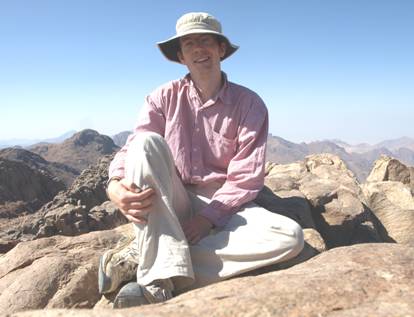Behaviour and Ecology
@ School of Life Sciences,
University of Nottingham
| Home | People | Research | Teaching | Publications | Opportunities | Links |
Dr Tom Reader
Research Interests
I am a behavioural and evolutionary ecologist, and my main research interests are: a) the evolution & maintenance of variation in visual & acoustic signals in animals, and b) the ecology & conservation of reedbeds.
Current research topics include the evolutionary ecology of mimicry and conspicuous polymorphisms, olfactory communication and competition in hyaenas, the ecology of artificial reedbeds, and the ecological significance of functional diversity in pollinator communities. Other projects include modelling species distributions guide conservation decisions and understand the impacts of climate change.
I do a mixture of theoretical and empiral work, and I have interests in a variety of taxa and habitats. I enjoy devising new approaches to statistical problems in biology, which has led me to collaborate with ecotoxicologists, microbiologists and cancer biologists.
Since my days as an undergraduate, I have had a professional love-affair with reedbeds. I have been particularly fascinated by the community which develops in the galls of a group of small, uncharismatic flies of the genus Lipara which feed on Phragmites australis (the common reed). I have also spent a lot of time chasing harvest mice (Micromys minutus) around reedbeds.
I am an associate editor of the journal Evolutionary Ecology, and a member of the editorial board for Behavioral Ecology.
You can find a list of my publications (with PDFs) here.
Teaching Interests
I teach ecology, evolution and behaviour to first, second, third and fourth year undergraduate students. I also love statistics and experimental design, and enjoy teaching them to undergraduate and postrgraduate students.I am Deputy Director of Studies in the School of Life Sciences, and am responsible for the Biology degree group, and the integrated Masters (MSci) programme.
I am an assoicate editor of Bioscience Horizons, a journal for undergraduate research.
Current Students
Ilango Aaron (MRes) is developing techniques for identifying individual spotted hyaenas from their scat.
Marie Athorn (PhD) is assessing the conservation value of constructed reedbeds.
Steve Bachman (PhD) is based at Kew Gardens, where he is assessing the conservation status of the world's plants.
Chris Mackin (PhD) is looking at functional diversity in pollinator communities associated with oil-seed rape.Jessica Vitale (PhD) is looking at interactions between spotted hyaenas and other large carnivores in Botswana.
Former students
Chris Taylor (PhD, 2015) studied the evolution of imperfect mimicry.
Esther Kettle (MRes, 2015) evaluated the distribution of the harvest mouse (Micromys minutus) in reedbeds in Nottinghamshire.
Jonny Warrin (MRes, 2015) used computer games to test hypotheses about the evolution of mimicry.
Nick Gladman (MRes, 2014) investigatied within- and among-sepcies variation in corixid (water boatman) song.
Gabby Flinn (MRes, 2014) studied the impact of predation on foraging behaviour in bumblebees.
Helena Ajuria (PhD, 2013) studied a conspicuous colour polymorphism in crab spiders.
Monica Padilla de la Torre (PhD, 2013) worked on vocal communication in cattle.
Rohanna Dow (PhD, 2011) studied the evolution of imperfect mimicry.
Brad Ochocki (MRes, 2010) modelled the impact of frequency dependent predation on spatially structured prey populations.
Lucy Groves (MRes, 2010) examined the impact of intraguild interactions on sexual interactions in gall flies (Lipara spp.).
Sam Lewis (MRes, 2009) was interested in the evolution of aposematism.Tim Newbold (PhD, 2009) modelled the distribution of species and biodiversity in Egypt.
Olivia Curno (PhD, 2009) studied adaptive decision making in mice.
Tim Phillips (PhD, 2007) worked on the adaptive significance of human altruism.

